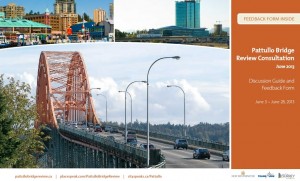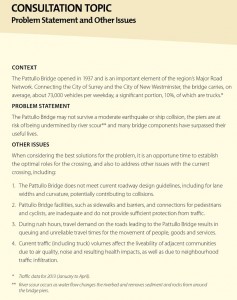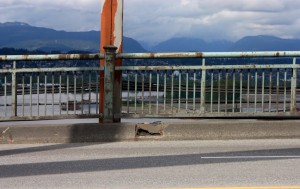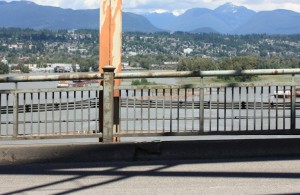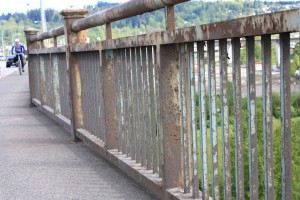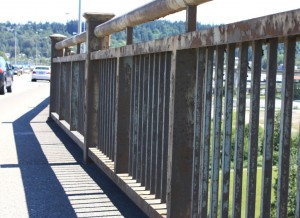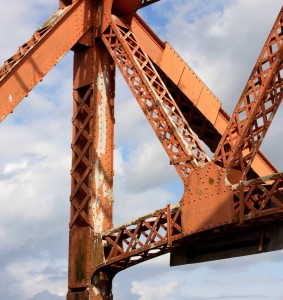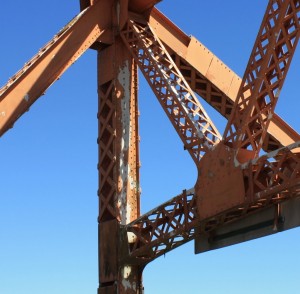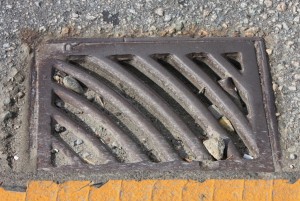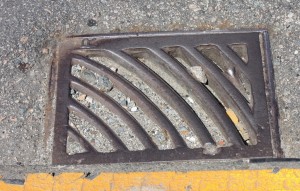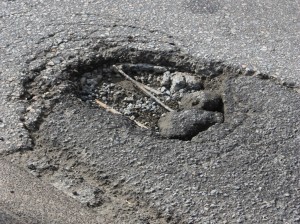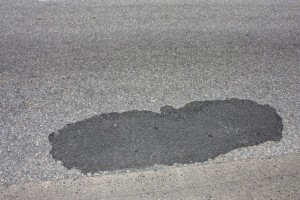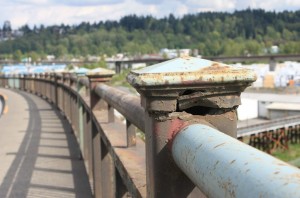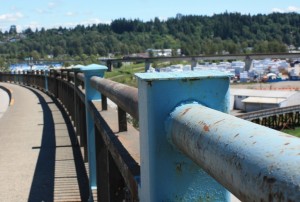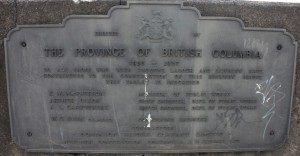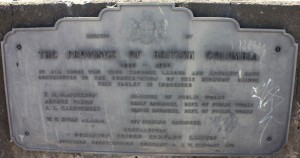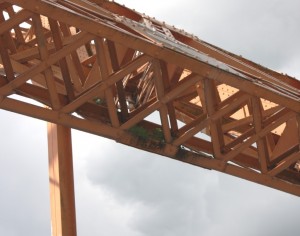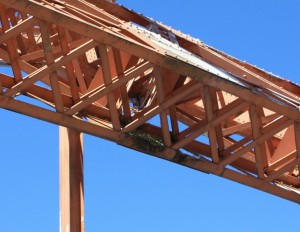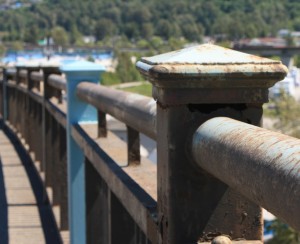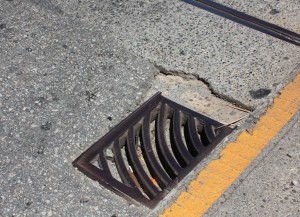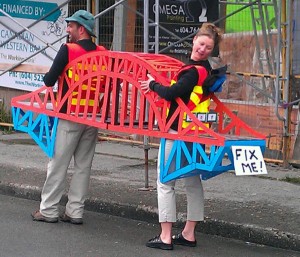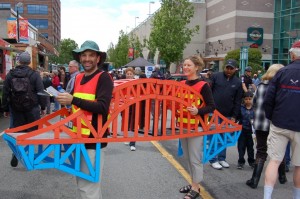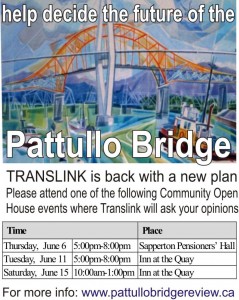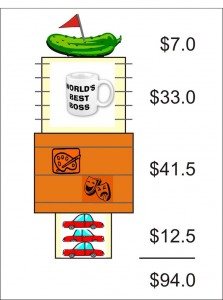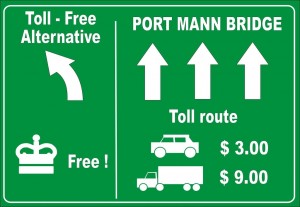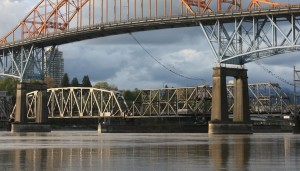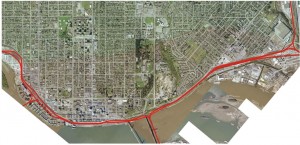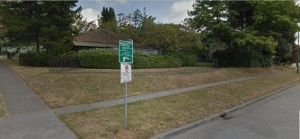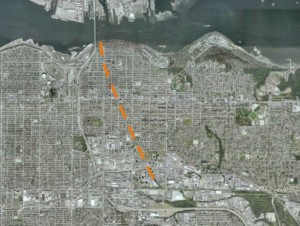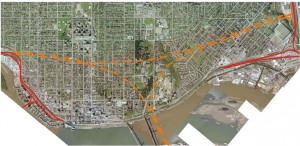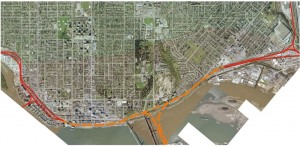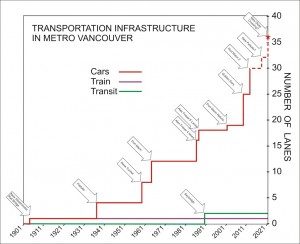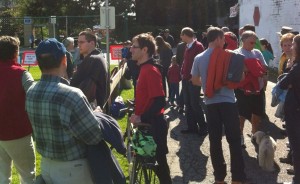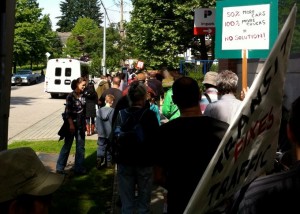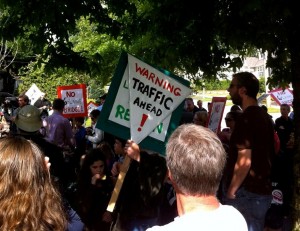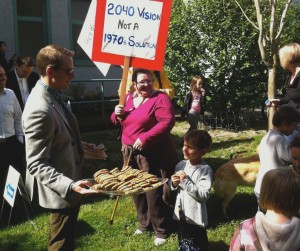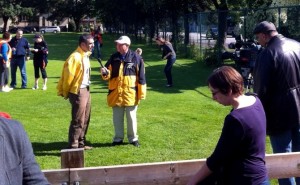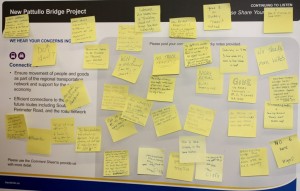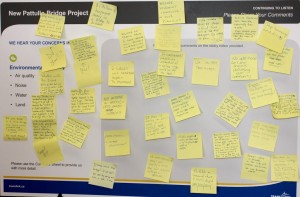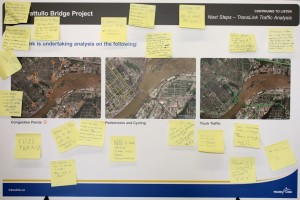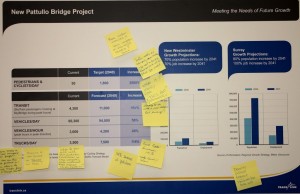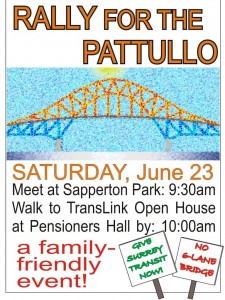Call me cautiously optimistic.
As promised, TransLink is back in town, talking Pattullo. I have attended a small-group talk on June 4th, and dropped into the open house on the 6th to hear the public feedback part of the event. I have also poured through the presentation materials.
Interesting that this new round of consultation is starting in New Westminster only a week after TransLink moved their office to the Brewery District, not two blocks from the Sapperton Pensioners Hall where the meetings were being held. This is no doubt a coincidence, but damn convenient for staff.
What is not a coincidence is that much of what we are seeing at this consultation looks very much like what the New Westminster community was asking for a year ago when the first attempt at consultation took place in New Westminster. At the time, New West was clearly not happy with the several iterations of 6-lane Pattullo offered, or with the lack of discussion of higher-level policy directives that were pushing us towards placing a bigger bridge within an already-constricted road system.
There is a lot of information provided in the consultation materials this time around, and I want to give some of it time to breathe, so this will be a multi-stage blog as I try to wrap my head around the various topics and options. Classify everything that follows as “first impressions”.
Without getting too deep into the options, there is much in the consultation documentation that should make New Westminster happy.
First look at Page 5 of the booklet where TransLink presents the problem statement:
“The Pattullo Bridge may not survive a moderate earthquake or ship collision, the piers are at risk of being undermined by river scour and many bridge components have surpassed their useful life”
Right up front, this is a vast improvement from the earlier consultation, because (as I suggested last year) TransLink is no longer talking about solving a traffic capacity problem, they are talking about solving an old bridge problem. This is the biggest reason why there is a much broader range of solutions being presented to deal with the problem, including the fundamental idea that fixing the bridge we have is viable.
Beyond the problem statement, there is a list of other issues that are to be considered while seeking an approach to solve the old bridge problem:
1. The Pattullo Bridge does not meet current roadway design guidelines, including for lane widths and curvature, potentially contributing to collisions.
2. Pattullo Bridge facilities, such as sidewalks and barriers, and connections for pedestrians and cyclists, are inadequate and do not provide sufficient protection from traffic.
3. During rush hours, travel demand on the roads leading to the Pattullo Bridge results in queuing and unreliable travel times for the movement of people, goods and services.
4. Current traffic (including truck) volumes affect the liveability of adjacent communities due to air quality, noise and resulting health impacts, as well as due to neighbourhood traffic infiltration.
Again these messages are very different than last year. Only point 3 acknowledges current traffic volumes, and point 4 correctly characterizes the biggest issue with traffic volumes is their negative impact on livability.
This problem set simply does not add up to adding lanes within the Pattullo Bridge corridor.
Looking at the traffic discussion on Page 7 provides some interesting context to the recent changes in traffic patterns. Notably, traffic on the Pattullo is not, as most would contend, worse than it was a decade ago, or even 20 years ago.
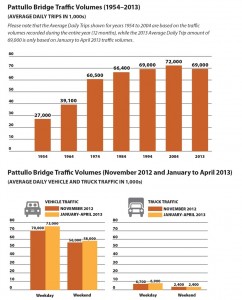 |
| TransLink graphic, click to zoom in. |
Perhaps more interesting is the preliminary traffic data showing the impact of the new Port Mann tolls and connection to the South Fraser Perimeter Road. Anecdotally, traffic has been worse in New West since those changes in December, and data does support a slight increase in numbers. Although the data is preliminary, there has been a 4% increase in traffic of all types (both on weekdays and the weekend). Truck traffic has only increased 3% on weekdays and is apparently unchanged on the weekend.
This doesn’t seem like much, but 200 extra trucks a day might be noticeable if they are all going the same way after crossing the bridge (you have to think during business hours that is about one extra truck every 5 minutes).
Still, the numbers reinforce what the real traffic load on the Pattullo is: not trucks carrying lettuce and cheese to New Westminster stores, but cars moving people though town. 92% of weekday traffic and 96% of weekend traffic is cars. Keep those numbers in mind when anyone talks about alleviating traffic congestion by building truck-only lanes.
Probably the most important new info in this package is on page 11- the statement of Objectives for the review, because these will be the measuring stick used to measure the various options. The option that best fits these eight objectives should be the one chosen, if the evaluation is a good one.
So let’s look at them in turn:
1. Moves towards the regional goal that most trips will be by walking, cycling
and transit.
This objective is straight out of the Regional Growth Strategy, TransLink’s Transport 2040 long-term planning document, and the goals of the draft City of New Westminster Master Transportation Plan. It also coincides with several Surrey long-term policy documents (Cycling Plan, Walking Plan, Sustainability Charter) and the Provincial Cycling Policy and Climate Action Plan. So easy to see where this is coming from.
2. Minimizes single occupant vehicle use and vehicle kilometres travelled.
Again, this objective fits all of the above plans, and speaks directly against any plan of expanded road capacity for the Pattullo.
3. Minimizes emissions of greenhouse gases (GHGs) and pollutants.
Interesting. People taking transit, cycling, or walking produce much less GHG and pollutants than drivers, including trucks. Moving freight by rail instead of truck reduces GHG and pollutants. Building transit infrastructure South of the Fraser will reduce GHG and pollutants much more than any road-building project crossing the River will. Keeping the old bridge will produce less pollutants and GHG than building a new one, just in relation to the amount concrete that would be saved.
4. Is capable of supporting neighbourhood liveability by minimizing and
mitigating impacts, including during construction, and provides an aesthetically pleasing structure.
Here is a big one that should make New Westminster happy. Livability of the surrounding community is taken into account. Another strike against bigger road capacity. Unless all of that traffic goes into the mythical McBride-Stormont Tunnel, but we will address that later. Aesthetically pleasing might be a challenge- I think the existing bridge looks great, but needs a coat of paint. “Pleasing” is pretty subjective, though.
5. Supports local and regional land use plans and economic development.
Once again, the regional landuse plan and local community plans for New Westminster and the portion of Surrey right across the bridge, are for compact, dense, urban centres where alternative transportation modes dominate.
6. Provides reliable access and predictable travel times for all modes, users, and
for an appropriate level of goods movement.
Some interesting wiggle words here. “Predictable” travel times don’t mean reduced travel times. A fully congested bridge is predictable, a bridge where traffic moves at 50km/h is predictable. A closed bridge is predictable. A bridge where traffic sometimes goes 50km/h and sometimes goes 80km/h, and is subject to accidents and poor visibility and crumbling bad pavement produces unpredictability. Transit and bicycles? Super predictable.
7. Provides a safe crossing for all modes, is structurally sound and meets current
standards for seismic and ship impacts.
No-one can argue against that.
8. Is cost-effective.
No-one can argue against that, except that there is no description of what they mean by the term. As TransLink has no money, one has to presume they are going to have to toll this bridge to pay for it. At the consultation I attended, it was strongly implied that tolls were the most likely option to finance the bridge, but they were not discounting the potential for contributions from senior governments.
For some reason, I doubt there will be a referendum to decide how to pay for this bridge (like was floated during the election as a proposal to find funding sources for TransLink operations). However, the question of Tolls is not secondary to this consultation, many of the goals around GHGs, improved livability, and predictability of travel times can be effectively addressed through Transportation Demand Management, including road pricing. The needs of this crossing, and other crossings in the region, will depend on whether they are tolled or not.
Ultimately, I am for the least-expensive option that maintains a link while improving alternative transportation access. Clearly, fixing the existing bridge is a viable and affordable option. At the other end of the spectrum cost-wise are the various tunnel modes. As I’ve said before, tunnels are great for trains, but for cars full of people, they are monumentally expensive. But I will save a complicated options analysis until another post.
Short version: This is what we asked for, folks. Last year when New Westminster showed up in force at the consultations and asked TransLink to go away and come back with something better, this is what that something better looked like. We are early in the process this time around, but looking at the problem formulation and evaluation criteria being applied, it is hard to see how anything larger than a 4-lane Pattullo (refurbished or new) could be accepted as the best approach.
If you have questions or opinions, your last chance to take them to TransLink in person is on Saturday at the Inn at the Quay. The on-line parts of the consultation will be running for a couple of weeks yet, and there have been reports of phone polls happening in New Westminster. There are lots of opportunities for you to take part here.
